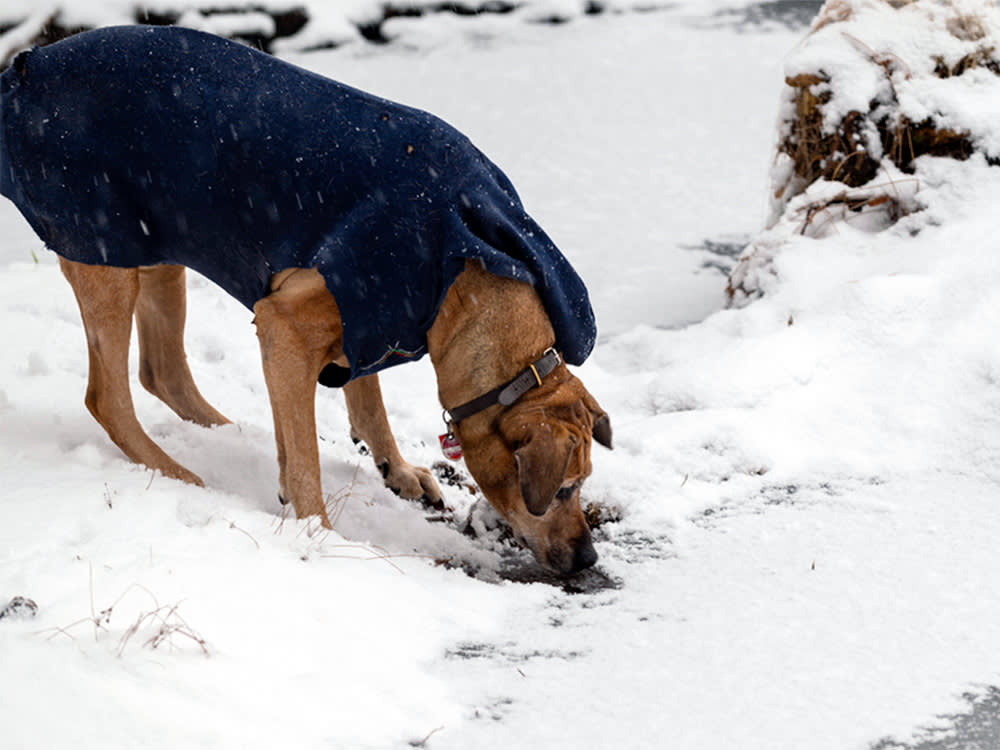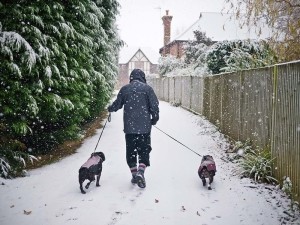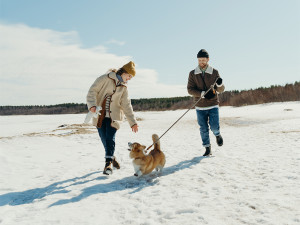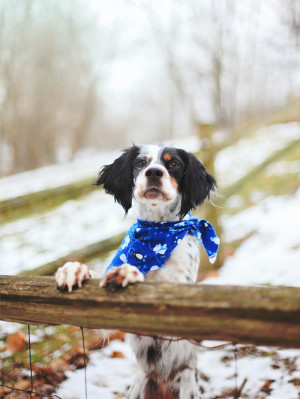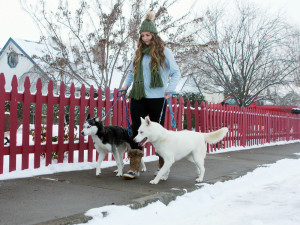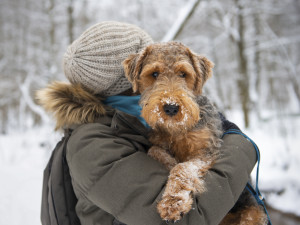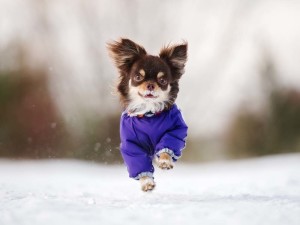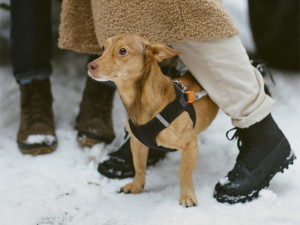Why Are Dogs Obsessed With Sniffing the Snow?
And why you deserve a pat on the back for indulging them.
While shoveling the three feet of snow we received in Flagstaff, Arizona, the past two days, I kept my focus on trying to be more like the dogs I saw walking by and less like the people I saw walking by. The dogs were gleeful, enthusiastic, energetic, and very focused on the snow. They had their noses in it much of the time. The people looked weary, resigned, exhausted, and they were either looking at their phones, or off in the distance in a glazed manner.
Even people who love snow find three feet of it all at once tiring and frankly a bit daunting, but dogs seem more likely to take the “more is always better” approach to snow. With a Nor’Easter slamming the East Coast todayopens in new tab, I’m sure many pet parents will feel that familiar dread of having to pull out the shovel once more. But their dogs will have a great time. If you have a dog who is obsessed with sniffing the snow, they are in good company because that is common in many dogs. But why?
Trick question: All dogs are perfect! But find out which type is the best fit for you.
What about snow makes the smells more enticing?
What is in the snow that makes dogs so obsessed with it? Another way to get at what makes snow so enticing to dogs is to ask what’s not in it? Because the reason dogs love to sniff snow — and sniff it, and sniff it, and sniff it — is there’s just so much in there worth sniffing. Starting with some very basic science, snow is water and is therefore wet. Moisture tends to hold smells longer, so snow is filled with smells that can’t escape. That ends the basic science lesson, but to summarize, dogs love to sniff to experience the world, and the snow is full of things to sniff and experience.
We all know dogs love to sniff the grass because of all the interesting smells to be found there, and anything that dogs can smell is likely to linger longer in the snow than in the grass, so there is more to smell and much of it will smell stronger, too. Any tracks or trails that dogs detect will be easier to follow because the snow helps keep them intact. So, if a squirrel, deer, cat, or another dog walked across the snow and more falling snow covered it, those trails will remain strong to a dog’s nose longer than usual. The delight dogs take in finding multiple scents criss-crossing under and on top of the snow all over their usual haunts explains their obsession with sniffing snow.
How much do you spend on your pet per year?
Why is it good to let them sniff the snow, even if you’re desperate for hot cocoa in front of the fire?
Dogs need the opportunity to engage in their natural behaviors — it’s so important for their wellbeing. When we prioritize creating situations that allow dogs to be dogs, our best friends are happier and lead better lives. Sniffing is one of those dog activities that gives dogs so much joy and satisfaction. They need stimulation every day, and that can sometimes be tricky in winter because it’s not always as easy to get out for as long each day for walks or other outings. You are not alone if your dog is a little more cooped up inside when it’s cold, but you really care about avoiding boredom for your dog.
That’s when letting your dog sniff the snow for what seems like forever is so valuable. The mental stimulation of sniffing for all or most of a walk does far more to help them be content and ready to relax than exercise alone. Outings based around letting your dog follow their nose, or “sniffaris,” as I prefer to call them, are an excellent way to do right by your dog. Simply knowing that dogs need the chance to do dog things and acting accordingly makes life better for them. That’s why I encourage you to let them keep on sniffing, even if you spend the walk figuring out how many days are left until beach weather.
When is it time to stop the sniffing?
If your dog wants to stay outside sniffing the snow indefinitely, you will have to be the one to decide when to come back inside. It’s not easy to make the call, but if either of the following are true, it’s time to be the grown-up and head in with your dog.
Your dog is starting to show signs of being cold or uncomfortable with the cold.
That may mean they are shivering, snow is collecting in balls on their fur, they are prancing in the snow in a way that suggests they don’t want their feet on or in the snow anymore, they are actually limping, or you see any other indication they’re having trouble handling the cold. Ideally, you would bring your dog inside before these signs of trouble, but if you do notice any, it’s time to leave the snow and go inside to warm up.
You need to come back in.
Whether you are cold or bored or need to get back to work, or having any other struggle related to staying outside, if you go back in, it’s a good idea to bring your dog in with you. It’s not good to leave them out there alone dealing with the challenges of the cold, chemicals that could harm them, such as salt, antifreeze, or falling ice.
If you are one of the lucky ones with a fenced-in yard, you may be able to leave them out there a little longer if you are watching them constantly and monitoring their behavior for any signs of discomfort with the conditions. In general, in harsh conditions, it’s preferable to be outside with them rather than for them to be out there alone. Of course, some dogs are so well-suited to the cold and love it so much that the suggestion to bring them in could have some exceptions.
They love sticking their noses in snow for reasons beyond the sniffing to be had.
When your dog dives headfirst into the snow headfirst or pokes their noses into piles of it, that might not actually be about sniffing. Many dogs love the other sensory aspects of snow. They seek out the cold, fluffy feeling of snow and probably relish the different sensory experiences and the playful opportunity this new substance offers them. That’s why they roll in it and toss it about. It’s fun and interesting and different from what they encounter on most days.
Unlike a lot of wild animals, our domestic dogs are neophilic, meaning they like new things. Of course, that’s not true of all dogs, but the majority of behaviorally healthy, well-socialized dogs are drawn to the unfamiliar, and snow fits into that category. Even if they experienced it in previous years, it’s new again this year to dogs who live in all but the most chronically cold and snowiest of habitats. Exploring snow is fun for many dogs, and dogs tend to explore the world with their noses. The combination so often leads to an obsession with sniffing snow that I fully endorse indulging.
